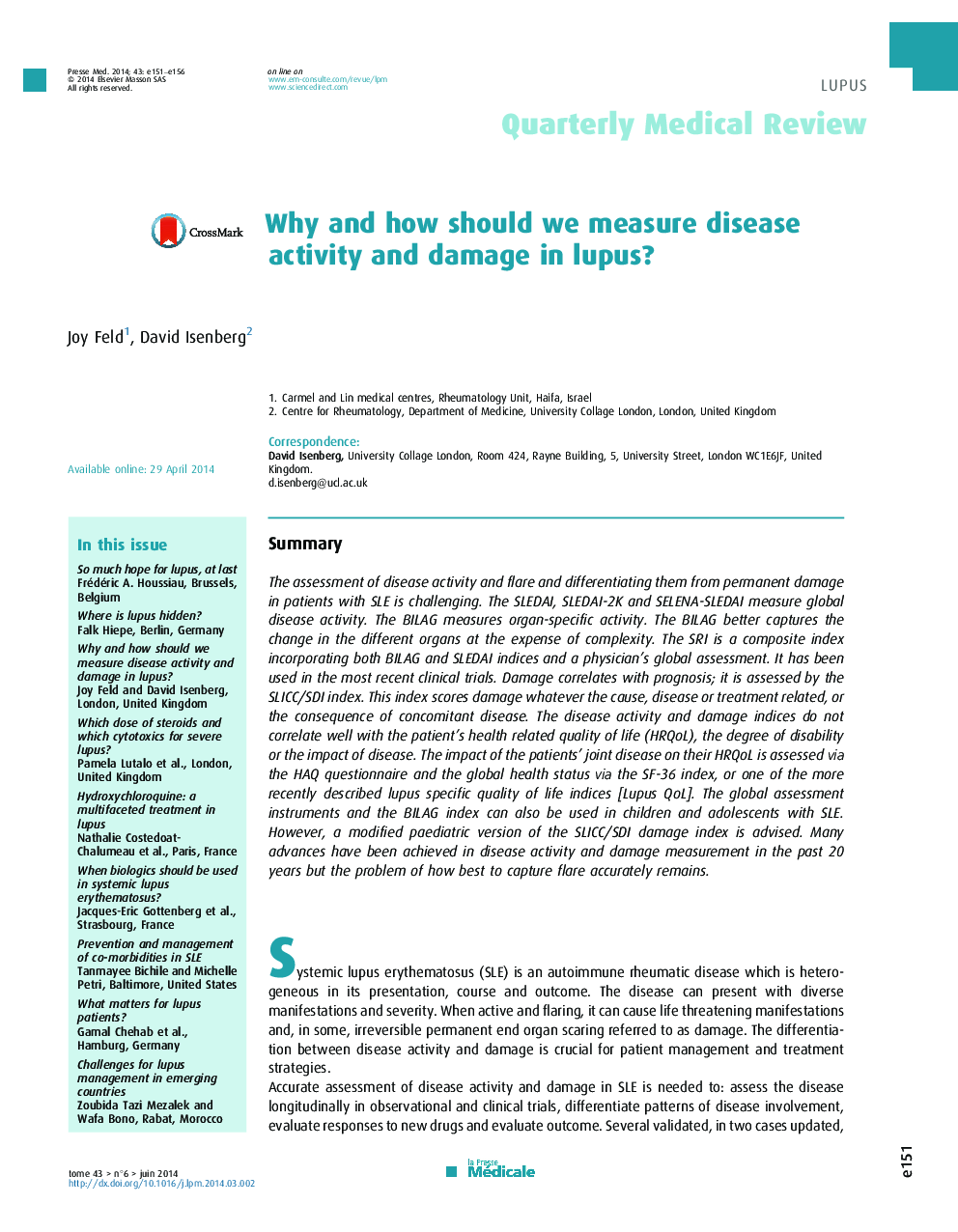| کد مقاله | کد نشریه | سال انتشار | مقاله انگلیسی | نسخه تمام متن |
|---|---|---|---|---|
| 3822149 | 1246590 | 2014 | 6 صفحه PDF | دانلود رایگان |
SummaryThe assessment of disease activity and flare and differentiating them from permanent damage in patients with SLE is challenging. The SLEDAI, SLEDAI-2K and SELENA-SLEDAI measure global disease activity. The BILAG measures organ-specific activity. The BILAG better captures the change in the different organs at the expense of complexity. The SRI is a composite index incorporating both BILAG and SLEDAI indices and a physician's global assessment. It has been used in the most recent clinical trials. Damage correlates with prognosis; it is assessed by the SLICC/SDI index. This index scores damage whatever the cause, disease or treatment related, or the consequence of concomitant disease. The disease activity and damage indices do not correlate well with the patient's health related quality of life (HRQoL), the degree of disability or the impact of disease. The impact of the patients’ joint disease on their HRQoL is assessed via the HAQ questionnaire and the global health status via the SF-36 index, or one of the more recently described lupus specific quality of life indices [Lupus QoL]. The global assessment instruments and the BILAG index can also be used in children and adolescents with SLE. However, a modified paediatric version of the SLICC/SDI damage index is advised. Many advances have been achieved in disease activity and damage measurement in the past 20 years but the problem of how best to capture flare accurately remains.
Journal: La Presse Médicale - Volume 43, Issue 6, Part 2, June 2014, Pages e151–e156
